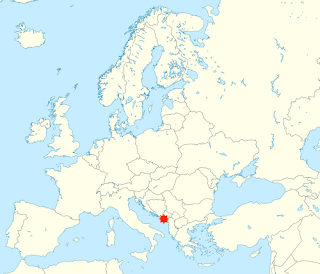Blaise, who had studied philosophy in his youth, was a doctor in Sebaste in Armenia, the city of his birth, who exercised his art with miraculous ability, good-will, and piety. When the bishop of the city died, he was chosen to succeed him, with the acclamation of all the people. His holiness was manifest through many miracles: from all around, people came to him to find cures for their spirit and their body; even wild animals came in herds to receive his blessing. In 316, Agricola, the governor of Cappadocia and of Lesser Armenia, having arrived in Sebastia at the order of the emperor Licinius to kill the Christians, arrested the bishop. As he was being led to jail, a mother set her only son, choking to death of a fish-bone, at his feet, and the child was cured straight away. Regardless, the governor, unable to make Blaise renounce his faith, beat him with a stick, ripped his flesh with iron combs, and beheaded him.
This incident forever joined the saint's name to throat ailments, but he is also the patron saint for infants, animals, builders, stonecutters, carvers, drapers, wool workers, wool industry, veterinarians, physicians, healing, the general sick, choking, and Ear Nose and Throat illnesses.
As well as a plethora of causes for which one might appeal to Blaise, there were numerous locations that claimed his patronage: several towns in Italy, in Sicily, Sebastea, and Dubrovnik, whose Republic of Ragusa even has his likeness on their flag! Dubrovnik and others have parades and festivities on 3 February for the saint's feast day.
Blaise was very popular in the Middle Ages, with many churches and locations named for him. A shrine near where he was martyred was commented on both by Marco Polo and William Rubruck.
Outside of works on saints' lives, he was mentioned by Aëtius of Amida, a medical writer, for his healing abilities. Aëtius is interesting for many reasons, one of which is the typographical error in one of his works that named a near-universal medical issue. But that's a story for tomorrow.




